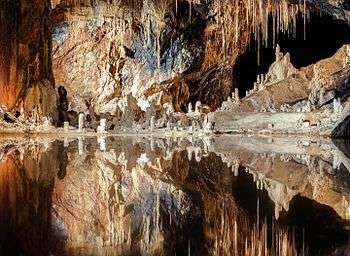Saalfeld
Saalfeld is a city in the Saalfeld-Rudolstadt area in Thuringia, Germany.

Understand
It is situated by the Saale River, 48 km (30 mi) south of German cultural capital Weimar and 130 km (81 mi) south-west of Leipzig. The population of the district is 118,000, that of the tri-city area is 58,000 and Saalfeld town proper is 26,800. It is best known internationally as the former capital of the branch of the house of Wettins (known amongst English-speakers as the Windsors) that is today's British royal family.
Get in
By train
- 🌍 Saalfeld station. Since the completion of the Leipzig–Erfurt–Nuremberg high-speed route that bypasses Saalfeld, intercity trains from Leipzig (1:45 h) or Stuttgart (4:15 h) via Nuremberg (2½ h) only call once a day, respectively. The nearest opportunities to change from high-speed to regional trains are in Erfurt (1:05, hourly regional train) or Bamberg (1:40 h). From Leipzig there is an hourly regional train service, taking just over two hours, also stopping in Naumburg (1:10) and Jena (40 min).
By car
Saalfeld is located some 40 km off the A4 (Frankfurt–Erfurt–Dresden) and A9 (Berlin–Leipzig–Nuremberg) motorway, respectively. Driving from Erfurt or Weimar takes just over an hour, from Leipzig 1½ to two hours.
Get around
The town is compact and walkable, but there are also regular buses and taxis running around
See
As well as the medieval town centre, and the surrounding forests and lakes of Thuringia:
- 🌍 Feengrotten. the nationally famous fairy grottoes
- 🌍 Schloss Saalfeld (Saalfeld palace). the palace of Queen Victoria's grandparents, the Saxe-Coburg. Now a regional government building
Do
Buy
The area is a rewarding place to shop for unique craftsworks made from glass, ceramic and precious stones.
Eat
There are several butchers in the town center who grill and sell the justly famous Thüringer Bratwurst (Thuringia sausage) in the afternoon.
- Hotel Anker. offers a good mix of classic and modern German dishes such as velk steak and locally caught trout.In the past hosted the German Kaiser (Emperor).
Drink
Sleep
There is nearly a dozen hotels and pensions in the area. Except for the high peak season around July, you should be able to just turn up and find a place to stay.
- 🌍 Hotel Anker, Markt 25/26, ☎ +49 3671 5990.
- 🌍 co.med Hotel, Rainweg 68b, ☎ +49 3671 45570.
- 🌍 Hotel u. Gaststätte Müller, Lachenstraße 52, ☎ +49 3671 512632.
Connect
Go next
- The forests, mountains and lakes of Thuringia are at hand, they are so close you can simply walk there!
- Rudolstadt (8 minutes by half-hourly train)
- Jena (40 min by half-hourly train, or cycle along the Saale bike trail) – university city with a historic old town, high-tech research and industries plus student lifestyle.
- Weimar (50 km north; 1:20 h by train via Jena-Göschwitz) – capital of classical German literature and theatre.
- Sonneberg (50 km south; 1:30 h by train and bus via Pressig-Rothenkirchen) – base for hiking or winter sports in the Thuringian Forest and traditional centre of toy makers.
- Erfurt (55 km northwest; 1:05 h by hourly train) – state capital of Thuringia, medieval old town core
- Mödlareuth (60 km southeast, no viable public transport link) – dubbed "Little Berlin", this village on the Bavaro-Thuringian state border was separated by the Iron Curtain during Cold War.
- Kronach (65 km south, one hour by train) – well-preserved old town and castle, hometown of Renaissance painter Lucas Cranach